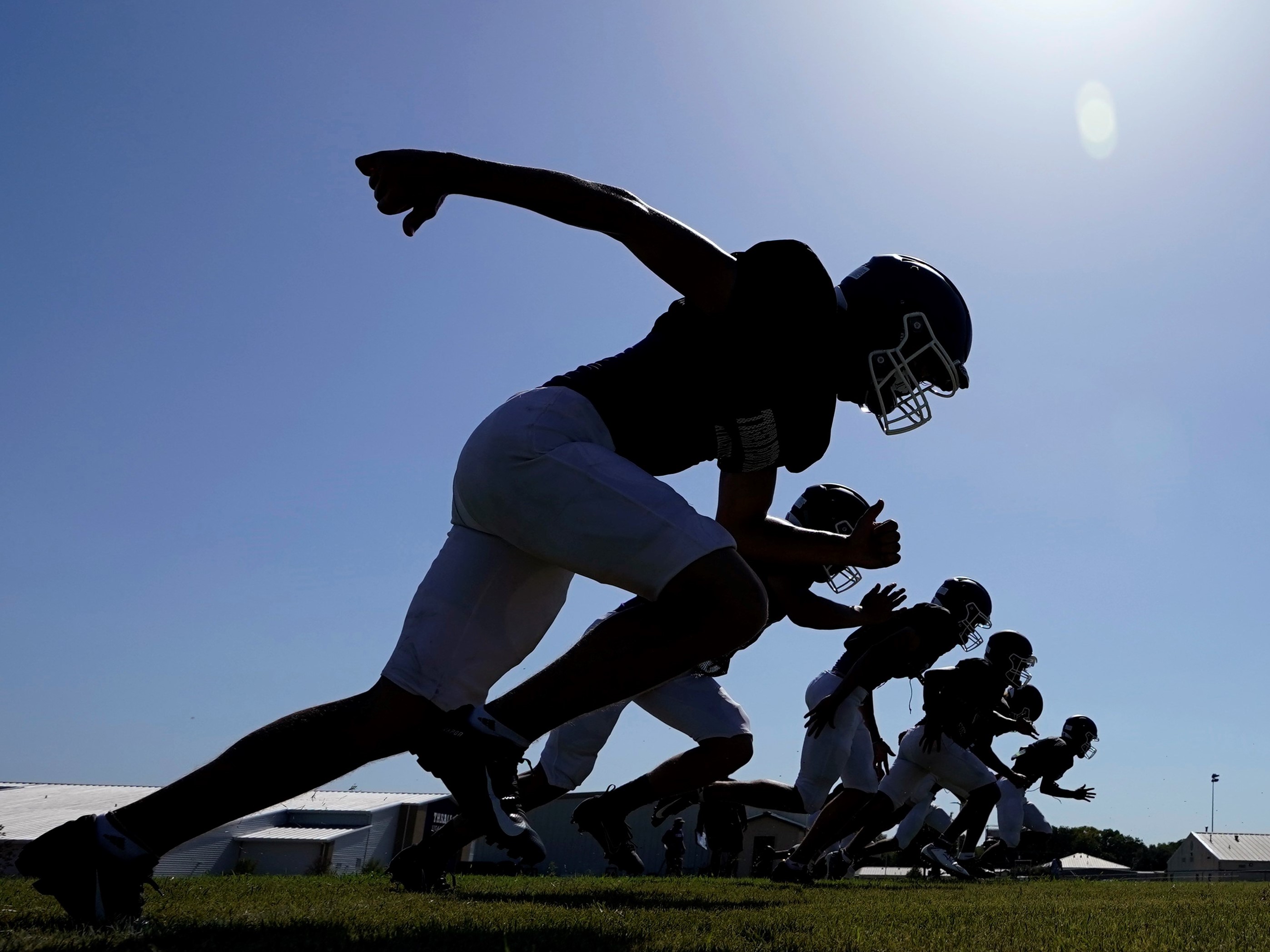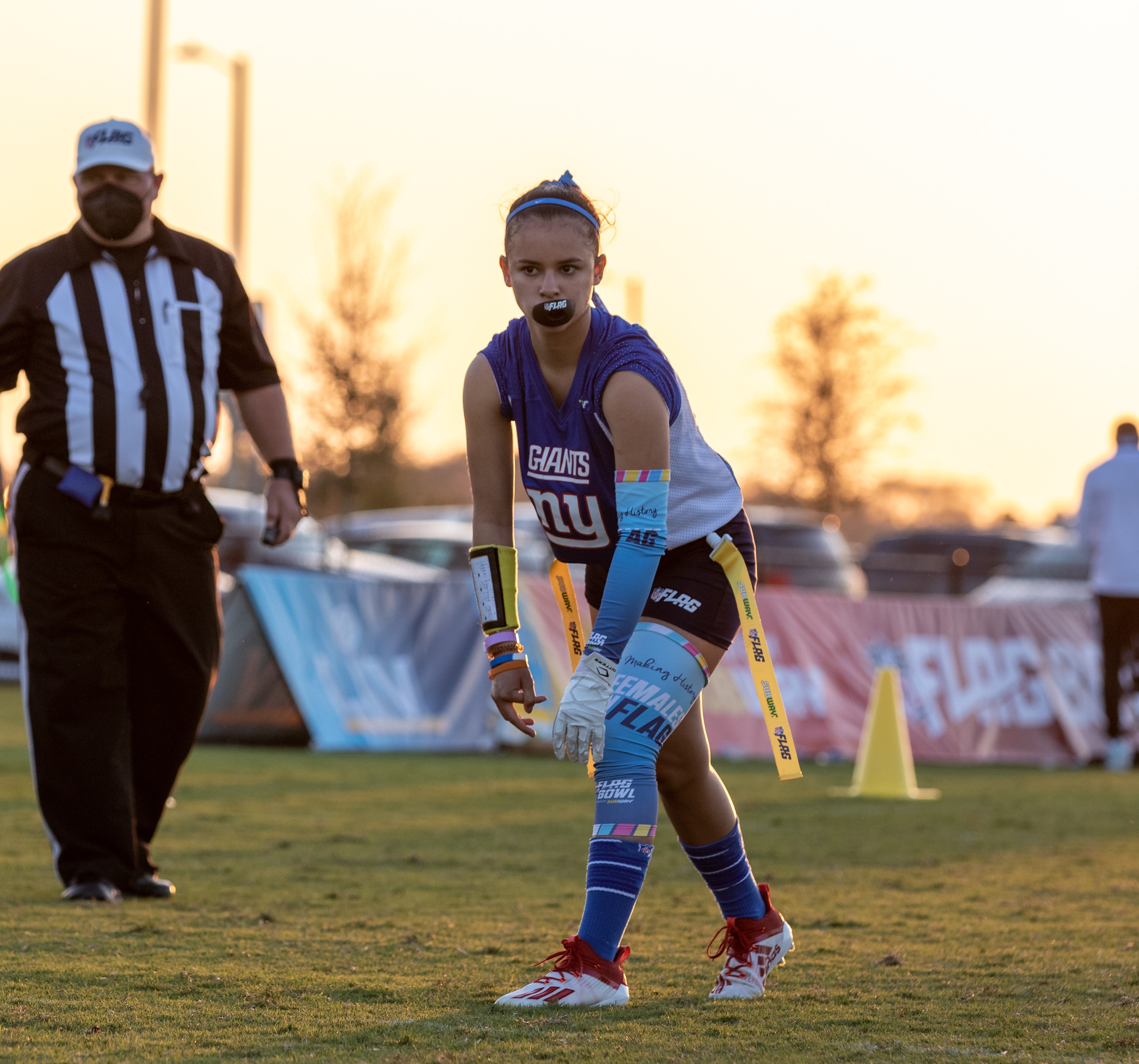Equipment All Players Should Have
- Football
- Gloves
- Mouth guard
- Water bottle
- Athletic bag
- Socks
- Cleats
Tackle Football Equipment
- Helmet
- Chin strap
- 7-piece pad set
- Shoulder pads
- Clear helmet visor (optional)
- Belt
- Eye black
- Integrated football pants
- Padded girdle
- Padded performance shirt
- Practice jersey
- Wrist coach for plays (if required)

To keep your child safe, always make sure his or her helmet is a good fit. Visit Riddell’s Helmet Fitting Guide for helpful tips.
NFL FLAG Football Equipment

Depending on the league, you can find different variations of what equipment is needed for flag football. For example, some high school programs or 7 on 7 teams may require soft shell helmets, while other leagues allow players to bring in their own flag football flags.
Luckily, NFL FLAG makes it easy — players receive almost everything they need to compete as a part of their registration.
Flag football flags and belt. Players wear belts with flags that hang along their sides and opponents have to pull the flags off of the ball-carrier’s belt. Every player receives an official NFL FLAG football belt and flag football flags, either from their coach or league organizer.
NFL FLAG team jersey. Every player also receives a team jersey upon registration.
Shorts. It’s important to wear shorts that don’t have pockets. This allows the belt and flags to be visible at all times, avoiding unnecessary penalties. It also is a safety precaution so that fingers don’t get stuck when attempting to remove the flag.
Mouthguard. This is the only protective gear that players wear. We recommend having a backup pair in your bag, just in case.
Football cleats. Metal cleats are not allowed in flag football.
Football gloves (optional). Some players prefer to use football gloves, which give extra grip to help control the ball. These aren’t required, though.
Learn more about NFL FLAG Football equipment.
The Importance of Properly Fitting Equipment
Properly fitting equipment ensures that athletes are fully protected and reduces the risk of equipment-related injuries. Well-fitted gear allows for freedom of movement and improves agility, speed, and overall performance without affecting an athlete’s range of motion.
It’s important to be aware of how to properly fit and maintain protective gear to ensure it works effectively. Using protective equipment correctly and ensuring it fits well can significantly reduce the risk of injury and keep athletes performing at their best. Investing in the right gear and educating athletes on proper fitting are key to safety on the field.
Shoulder Pads. Shoulder pads absorb impact and protect the upper body, including the collarbone and chest. Properly fitted pads should sit over the shoulders without restricting movement or riding up.
Padding (Knee, Elbow, Hip). Padding cushions key areas of the body during falls or contact, helping to prevent bruises, fractures, and joint injuries.
Cleats. Cleats provide traction and stability, reducing the risk of slips and falls. The right cleat type depends on the playing surface (grass, turf) and should fit comfortably without causing blisters or discomfort.
Information on this page is courtesy of the USA Football Parent Guide and NFL FLAG.































